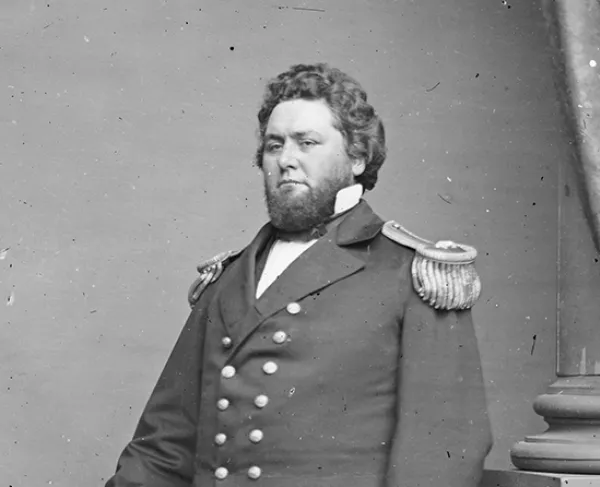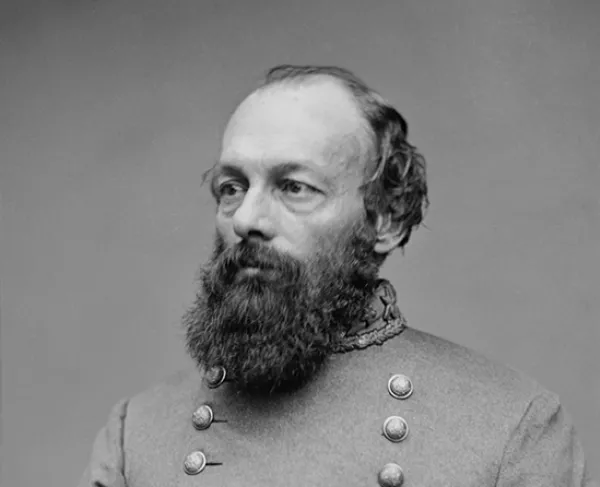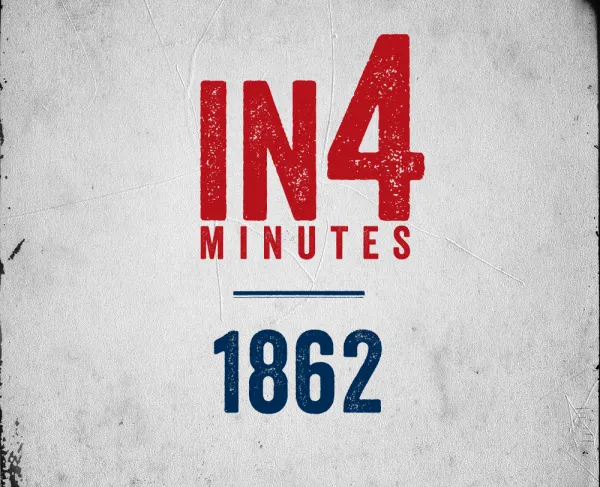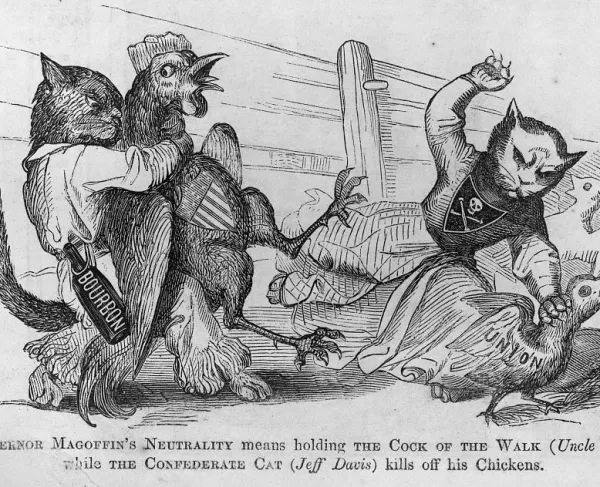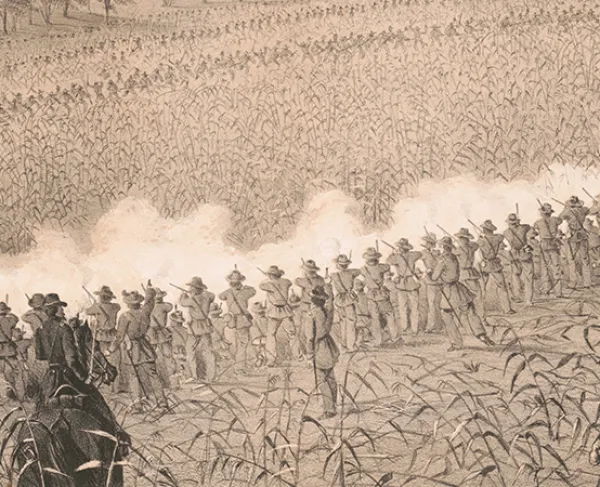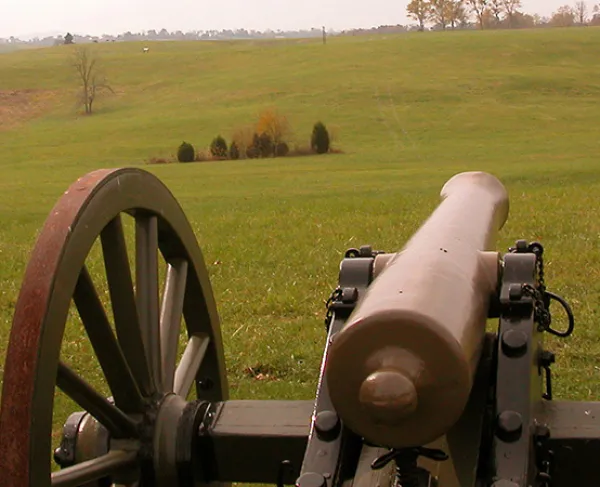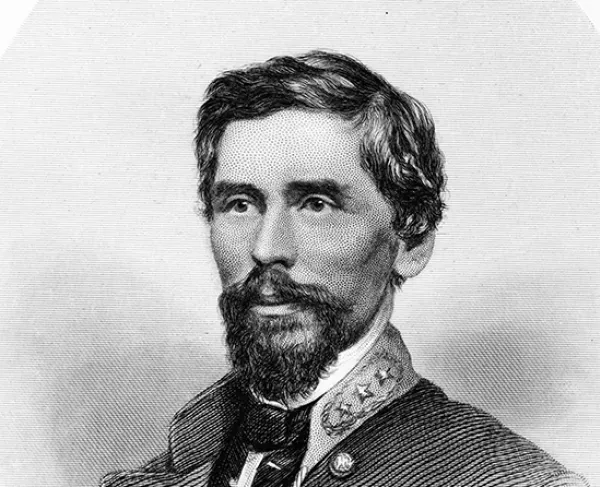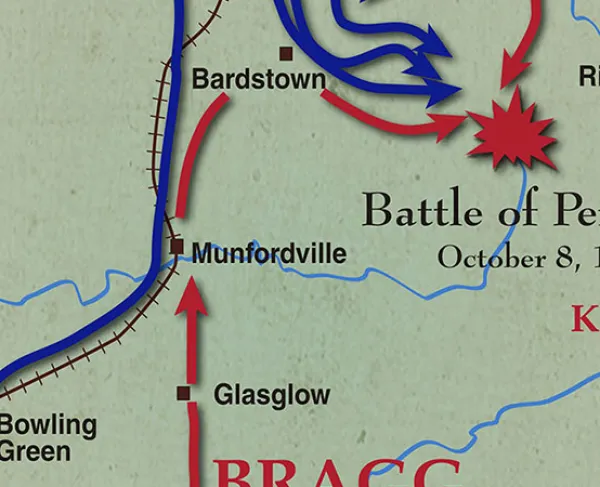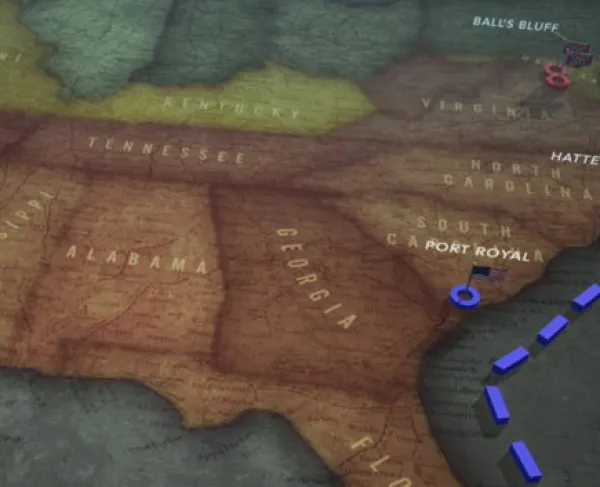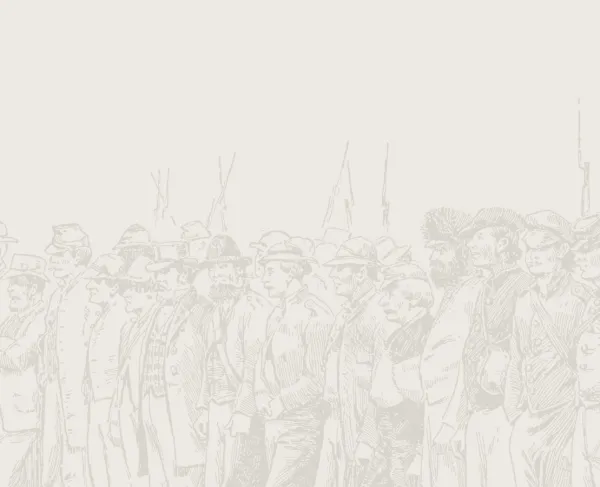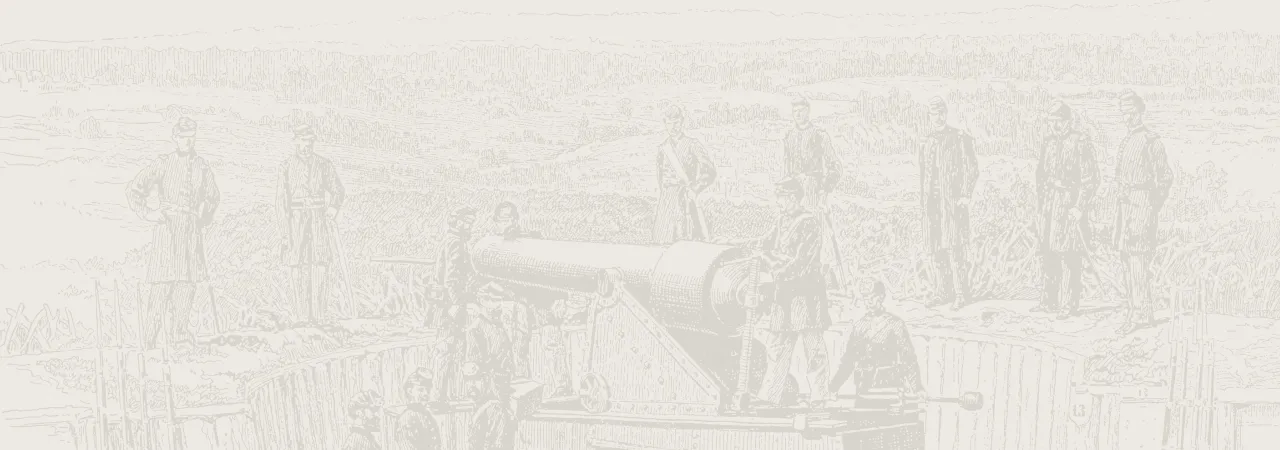
Richmond
Madison County, KY | Aug 29 - 30, 1862
With Gen. Kirby Smith’s Confederate victory at the Battle of Richmond, the state of Kentucky was opened to southern invasion, which eventually led to the capture of Frankfort on September 2, 1862, the only Union capital to fall to the Confederacy during the Civil War.
How It Ended
Confederate Victory. After a running fight, the battle ended when Confederate forces overran the Federal's last position in the city of Richmond. Hundreds of Federals were captured, and only a few escaped, including the wounded Gen. William “Bull” Nelson. This battle opened the state of Kentucky to the Confederacy and gave a much-needed boost for the campaign to bring the state under Confederate control. Several days after the battle on September 2nd, Frankfort, the capital of Kentucky, fell to Confederate forces, the only Union capital to fall to the South during the war.
In Context
In August 1862, Gen. Edmund Kirby Smith’s Army of Kentucky with 6,500 Confederates moved through eastern Kentucky in support of Gen. Braxton Bragg’s invading Army of Mississippi. Bragg and Smith sought to support pro-Confederate political forces in the Union-held border state and bring in recruits. While Bragg advanced his army north from Tennessee, Smith moved toward Richmond, Kentucky, toward the railroad center at Lexington and the state capital at Frankfort.
As many Midwest states began to fear a large-scale Confederate invasion, Midwest governors created regiments and sent them to the front with little to no training. These men stood in the way of Smith and his army. Generals Charles Cruft and Mahlon D. Manson commanded two newly formed brigades centered around Richmond. By August 28th, the advance of the Confederate force, led in front by division commander Gen. Patrick R. Cleburne, neared Richmond, Kentucky. With these armies in position, the stage was set for the first large-scale fight of the Kentucky Campaign.
On the morning of August 29, 1862, Col. John S. Scott’s Confederate cavalry ran into a Union brigade of four Indiana regiments and two artillery batteries under Gen. Mahlon D. Manson near Rogersville, seven miles south of Richmond. After a sharp clash, Manson’s Hoosiers pushed the Confederates back. The Federal pursuit was halted when Manson’s regiments met Cleburne’s main infantry line astride the Richmond-Kingston Pike. That evening, Manson requested reinforcements from his division commander, Gen. William “Bull” Nelson, in Lexington. Nelson ordered the brigade of Gen. Charles Cruft to support Manson.
On August 30, after a brief artillery duel, Cleburne attacked Manson near Mt. Zion Church. Another Confederate division under Gen. Thomas Churchill supported Cleburne and attacked the Union right. Crufts’s brigade arrived on the field, but it was not enough. With pressure on both flanks, the Union line gave way shortly before noon. The shattered Federal regiments fell back to the area around the Rogers House. Unable to rally their men there, Manson and Cruft retreated to the Duncannon Road, about a mile north on the turnpike. Manson placed his brigade on the east side of the road with Cruft on the west side, supported by two artillery batteries. Cleburne and Churchill pressed forward heavily, and the Union line collapsed early in the afternoon. The Union soldiers fled for six miles north in complete disorder toward Richmond.
Nelson learned of the fight and arrived on the field. For a short time, he rallied his men and formed a battle line in the Richmond Cemetery just south of the city. However, with darkness approaching, Smith ordered Cleburne to attack again, and the Federals fell back. Panicked Union troops filled the streets of Richmond in mass confusion. Smith ordered Scott’s cavalry to cut off any escape routes for the Federals. After dark, Scott’s troopers hit the routed Federals two miles north of Richmond and captured most of Nelson’s men. A wounded Gen. Nelson, fortunately, was able to escape.
4,900
750
Of the 6,800 Union troops engaged at Richmond, around 4,000 were captured. The others escaped towards Lexington or were left dead or wounded on the battlefield. Smith went on to capture Frankfort on September 2, the only Federal state capital to fall during the entire war.
The Union defeat at the Battle of Richmond opened the door for the invading Confederate army to march further into Kentucky, eventually capturing Frankfort and Lexington. For the Confederate forces, this victory gave the army a huge morale boost.
When the Confederate armies invaded Kentucky, Illinois, Indiana, and Ohio rushed “green,” or inexperienced, troops into the field to counter the threat. The states worried that they would also be invaded if Kentucky fell.
Richmond: Featured Resources
All battles of the Confederate Heartland Offensive Campaign
Related Battles
6,850
6,500
4,900
750
